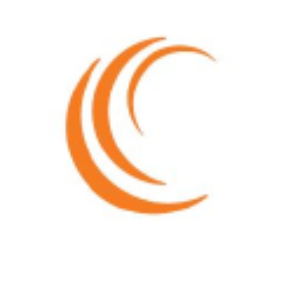Soligenix Announces Agreement on the Design of a Second Confirmatory Placebo-Controlled Trial for HyBryte™ With the European Medicines Agency
Randomized Study with 18 Weeks Continuous Treatment Expected to Replicate and Extend Results from the First, Statistically Significant Phase 3 Study
The confirmatory study, called FLASH2 (Fluorescent Light Activated Synthetic Hypericin 2), replicates the double-blind, placebo-controlled design used in the first successful Phase 3 FLASH study that consisted of three 6-week treatment cycles (18 weeks total), with the primary efficacy assessment occurring at the end of the initial 6 week double-blind, placebo-controlled treatment cycle (Cycle 1). However, the second study extends the double-blind, placebo-controlled assessment to 18 weeks of continuous treatment (no "between-Cycle" treatment breaks) with the primary endpoint assessment occurring at the end of the 18-week timepoint. In the first Phase 3 study, a treatment response of
"In treating CTCL, which is a chronic cancer with no cure, long-term safety is a strong driver of treatment choice. Most current treatment options for CTCL are associated with significant safety concerns, including black-box warnings," stated Brian Poligone, MD, PhD, Director of the Rochester Skin Lymphoma Medical Group, Fairport, NY. "Clinical studies with HyBryte™ have demonstrated strong and rapid efficacy with a very benign safety profile, with broad applicability across different lesion types, different skin tones and different disease stages. I know I can speak for my colleagues that have been involved with these studies when I say that the data generated to date has been extremely compelling. This second study is very similar to the first FLASH study, and should build on these compelling data, while allowing us to more closely treat as we would in a 'real world' setting. We believe the outcome of this trial will further validate the utility of HyBryte™ in early-stage CTCL and we look forward to participating in this important study."
"With its chronic course and major impact on patient quality of life, CTCL is an orphan disease in urgent need of additional treatment options that are well-tolerated and safe over the long term," stated Christopher Schaber, PhD, President and Chief Executive Officer of Soligenix. "Studies to date have indicated a substantial increase in efficacy with longer treatment and similar performance against both patch and plaque lesions. These results are derived from one of the largest studies ever conducted in CTCL, and we believe this second study will both substantiate and improve upon these results. Given our extensive engagement with the CTCL community, our esteemed Medical Advisory Board and our previous trial experience with this disease, we anticipate being able to accelerate enrollment in support of this study, including the potential to enroll previously identified and treated HyBryte™ patients from the FLASH study. Discussions with the FDA on an appropriate study design remain ongoing. While collaborative, the agency has expressed a preference for a longer duration comparative study over a placebo-controlled trial. Given the shorter time to potential commercial revenue and the similar trial design to the first FLASH study afforded by the EMA accepted protocol, we will initiate that study. At the same time, we will continue discussions with the FDA on modifying the development path to adequately address their feedback."
The confirmatory Phase 3, randomized, double-blind, placebo-controlled, multicenter study includes approximately 80 subjects with early-stage CTCL. It will evaluate the efficacy and safety of HyBryte™ topically applied to CTCL lesions twice weekly for 18 weeks, with each application followed 21 (±3) hours later by the administration of safe, visible light at a wavelength of 500 to 650 nm. The light will be administered starting at 6 J/cm2 twice weekly. This will be increased upwards by 2 J/cm2 until: 1) the patient experiences a Grade 1 erythema, 2) the patient reaches the maximum dose of 30 J/cm2, or 3) the patient cannot tolerate the treatment time, whichever comes first. All of the patient's lesions that are readily available for exposure to the visible light source will be treated and 3 to 5 index lesions in each patient will be prospectively identified and indexed for the modified composite assessment of index lesions severity (mCAILS) evaluation prior to randomization (baseline). The primary efficacy endpoint will be assessed on the percent of patients in each of the two treatment groups (i.e., HyBryte™ and placebo) achieving a Partial or Complete Response (yes/no) of the treated lesions defined as a ≥
About HyBryte™
HyBryte™ (research name SGX301) is a novel, first-in-class, photodynamic therapy utilizing safe, visible light for activation. The active ingredient in HyBryte™ is synthetic hypericin, a potent photosensitizer that is topically applied to skin lesions that is taken up by the malignant T-cells, and then activated by safe, visible light approximately 24 hours later. The use of visible light in the red-yellow spectrum has the advantage of penetrating more deeply into the skin (much more so than ultraviolet light) and therefore potentially treating deeper skin disease and thicker plaques and lesions. This treatment approach avoids the risk of secondary malignancies (including melanoma) inherent with the frequently employed DNA-damaging drugs and other phototherapy that are dependent on ultraviolet exposure. Combined with photoactivation, hypericin has demonstrated significant anti-proliferative effects on activated normal human lymphoid cells and inhibited growth of malignant T-cells isolated from CTCL patients. In a published Phase 2 clinical study in CTCL, patients experienced a statistically significant (p=0.04) improvement with topical hypericin treatment whereas the placebo was ineffective. HyBryte™ has received orphan drug and fast track designations from the FDA, as well as orphan designation from the EMA.
The published Phase 3 FLASH trial enrolled a total of 169 patients (166 evaluable) with Stage IA, IB or IIA CTCL. The trial consisted of three treatment cycles. Treatments were administered twice weekly for the first 6 weeks and treatment response was determined at the end of the 8th week of each cycle. In the first double-blind treatment cycle (Cycle 1), 116 patients received HyBryte™ treatment (
In the second open-label treatment cycle (Cycle 2), all patients received HyBryte™ treatment of their index lesions. Evaluation of 155 patients in this cycle (110 receiving 12 weeks of HyBryte™ treatment and 45 receiving 6 weeks of placebo treatment followed by 6 weeks of HyBryte™ treatment), demonstrated that the response rate among the 12-week treatment group was
The third (optional) treatment cycle (Cycle 3) was focused on safety and all patients could elect to receive HyBryte™ treatment of all their lesions. Of note,
Overall safety of HyBryte™ is a critical attribute of this treatment and was monitored throughout the three treatment cycles (Cycles 1, 2 and 3) and the 6-month follow-up period. HyBryte's™ mechanism of action is not associated with DNA damage, making it a safer alternative than currently available therapies, all of which are associated with significant and sometimes fatal, side effects. Predominantly these include the risk of melanoma and other malignancies, as well as the risk of significant skin damage and premature skin aging. Currently available treatments are only approved in the context of previous treatment failure with other modalities and there is no approved front-line therapy available. Within this landscape, treatment of CTCL is strongly motivated by the safety risk of each product. HyBryte™ potentially represents the safest available efficacious treatment for CTCL. With very limited systemic absorption, a compound that is not mutagenic and a light source that is not carcinogenic, there is no evidence to date of any potential safety issues.
The Phase 3 FLASH study was partially funded by the National Cancer Institute via a Phase II SBIR grant (#1R44CA210848-01A1) awarded to Soligenix, Inc. In addition, the FDA awarded an Orphan Products Development grant to support the evaluation of HyBryte™ for expanded treatment in patients with early-stage CTCL, including in the home use setting. The grant, totaling
About Cutaneous T-Cell Lymphoma (CTCL)
CTCL is a class of non-Hodgkin's lymphoma (NHL), a type of cancer of the white blood cells that are an integral part of the immune system. Unlike most NHLs which generally involve B-cell lymphocytes (involved in producing antibodies), CTCL is caused by an expansion of malignant T-cell lymphocytes (involved in cell-mediated immunity) normally programmed to migrate to the skin. These malignant cells migrate to the skin where they form various lesions, typically beginning as patches and may progress to raised plaques and tumors. Mortality is related to the stage of CTCL, with median survival generally ranging from about 12 years in the early stages to only 2.5 years when the disease has advanced. There is currently no cure for CTCL. Typically, CTCL lesions are treated and regress but usually return either in the same part of the body or in new areas.
CTCL constitutes a rare group of NHLs, occurring in about
About Soligenix, Inc.
Soligenix is a late-stage biopharmaceutical company focused on developing and commercializing products to treat rare diseases where there is an unmet medical need. Our Specialized BioTherapeutics business segment is developing and moving toward potential commercialization of HyBryte™ (SGX301 or synthetic hypericin sodium) as a novel photodynamic therapy utilizing safe visible light for the treatment of cutaneous T-cell lymphoma (CTCL). With successful completion of the second Phase 3 study, regulatory approvals will be sought to support potential commercialization worldwide. Development programs in this business segment also include expansion of synthetic hypericin (SGX302) into psoriasis, our first-in-class innate defense regulator (IDR) technology, dusquetide (SGX942) for the treatment of inflammatory diseases, including oral mucositis in head and neck cancer, and (SGX945) in Behçet's Disease.
Our Public Health Solutions business segment includes development programs for RiVax®, our ricin toxin vaccine candidate, as well as our vaccine programs targeting filoviruses (such as Marburg and Ebola) and CiVax™, our vaccine candidate for the prevention of COVID-19 (caused by SARS-CoV-2). The development of our vaccine programs incorporates the use of our proprietary heat stabilization platform technology, known as ThermoVax®. To date, this business segment has been supported with government grant and contract funding from the National Institute of Allergy and Infectious Diseases (NIAID), the Defense Threat Reduction Agency (DTRA) and the Biomedical Advanced Research and Development Authority (BARDA).
For further information regarding Soligenix, Inc., please visit the Company's website at https://www.soligenix.com and follow us on LinkedIn and Twitter at @Soligenix_Inc.
This press release may contain forward-looking statements that reflect Soligenix, Inc.'s current expectations about its future results, performance, prospects and opportunities, including but not limited to, potential market sizes, patient populations and clinical trial enrollment. Statements that are not historical facts, such as "anticipates," "estimates," "believes," "hopes," "intends," "plans," "expects," "goal," "may," "suggest," "will," "potential," or similar expressions, are forward-looking statements. These statements are subject to a number of risks, uncertainties and other factors that could cause actual events or results in future periods to differ materially from what is expressed in, or implied by, these statements, and include the expected amount and use of proceeds from the offering and the expected closing date of the offering. Soligenix cannot assure you that it will be able to successfully develop, achieve regulatory approval for or commercialize products based on its technologies, particularly in light of the significant uncertainty inherent in developing therapeutics and vaccines against bioterror threats, conducting preclinical and clinical trials of therapeutics and vaccines, obtaining regulatory approvals and manufacturing therapeutics and vaccines, that product development and commercialization efforts will not be reduced or discontinued due to difficulties or delays in clinical trials or due to lack of progress or positive results from research and development efforts, that it will be able to successfully obtain any further funding to support product development and commercialization efforts, including grants and awards, maintain its existing grants which are subject to performance requirements, enter into any biodefense procurement contracts with the
![]() View original content:https://www.prnewswire.com/news-releases/soligenix-announces-agreement-on-the-design-of-a-second-confirmatory-placebo-controlled-trial-for-hybryte-with-the-european-medicines-agency-302106263.html
View original content:https://www.prnewswire.com/news-releases/soligenix-announces-agreement-on-the-design-of-a-second-confirmatory-placebo-controlled-trial-for-hybryte-with-the-european-medicines-agency-302106263.html
SOURCE Soligenix, Inc.








